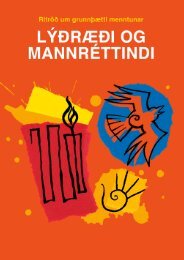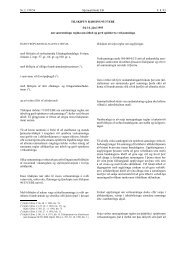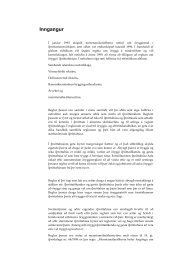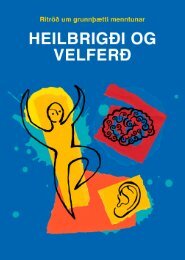Arts and Cultural Education in Iceland : Professor Anne Bamford
Arts and Cultural Education in Iceland : Professor Anne Bamford
Arts and Cultural Education in Iceland : Professor Anne Bamford
You also want an ePaper? Increase the reach of your titles
YUMPU automatically turns print PDFs into web optimized ePapers that Google loves.
vocal tra<strong>in</strong><strong>in</strong>g. These are heavily subsidised. There are a smaller number of ‘private’ schools<br />
offer<strong>in</strong>g visual arts, drama, dance, speech tra<strong>in</strong><strong>in</strong>g, poetry, crafts or other art forms. The ‘private’<br />
arts schools generally do not receive subsidies <strong>and</strong> are paid for by pupils’ fees. There are also a<br />
wide range of voluntary arts education providers <strong>in</strong>clud<strong>in</strong>g youth clubs, the Red Cross, church<br />
groups <strong>and</strong> others. These tend to be free of charge <strong>and</strong> cover a wide range of arts <strong>and</strong> cultural<br />
activities. Amateur arts are a strong force with<strong>in</strong> Icel<strong>and</strong>ic Society <strong>and</strong> local amateur theatres,<br />
choirs <strong>and</strong> b<strong>and</strong>s are especially popular. These are spread across the country <strong>and</strong> even small<br />
towns <strong>and</strong> villages are likely to have access to an arts school.<br />
The majority of these schools are for music – primarily to learn an <strong>in</strong>strument <strong>and</strong> to study<br />
musicology <strong>and</strong> musical theory. The most popular <strong>in</strong>struments appear to be the guitar <strong>and</strong> the<br />
piano, but this can vary from one music school to the next. There is some <strong>in</strong>dication that music<br />
schools may restrict access to certa<strong>in</strong> <strong>in</strong>strument tuition to promote a more ‘traditional’ mix of<br />
<strong>in</strong>struments (or due to availability or shortage of teachers). Guitar <strong>and</strong> drums seem to be<br />
particularly restricted, as the follow<strong>in</strong>g comment from a music school director exemplifies; “Rock<br />
music is able to attract more boys. We didn’t dare offer guitar as all the pupils would choose<br />
that”.<br />
The first music school <strong>in</strong> Icel<strong>and</strong> was <strong>in</strong> 1911. The 1963 the Law of Music Schools 13 was<br />
enacted. In 1975, the law was changed <strong>in</strong> such a way that fund<strong>in</strong>g of teachers salaries was split<br />
50/50 between the local authorities <strong>and</strong> the state. In 1989 the music schools became 100%<br />
locally funded. While other arts schools are emerg<strong>in</strong>g they do not receive the prom<strong>in</strong>ence given<br />
to music. The music schools have high status <strong>in</strong> the system <strong>and</strong> more broadly <strong>in</strong> the community.<br />
There is an official curriculum for the music schools <strong>and</strong> an evaluation system, as can be seen <strong>in</strong><br />
Figure 1.12.1.<br />
Figure 1.12.1 Does the music school have a school curriculum?<br />
These curricula are widely accessible to parents <strong>and</strong> the community, generally via the music<br />
school website (Figure 1.12.2).<br />
13 This law was established by the M<strong>in</strong>ister of <strong>Education</strong> who established the law [Gylfi Þ. Gíslason, m<strong>in</strong>ister of<br />
education 1956-1971 ].<br />
36



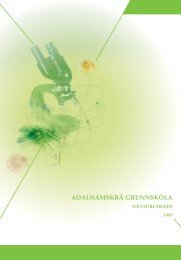
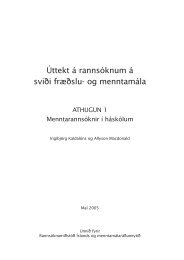

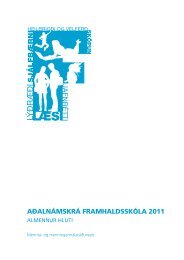
![Aðalnámskrá tónlistarskóla : rytmÃsk tónlist [Eingöngu á rafrænu formi]](https://img.yumpu.com/50843672/1/184x260/aaalnamskra-tanlistarskala-rytma-sk-tanlist-eingangu-a-rafranu-formi.jpg?quality=85)
